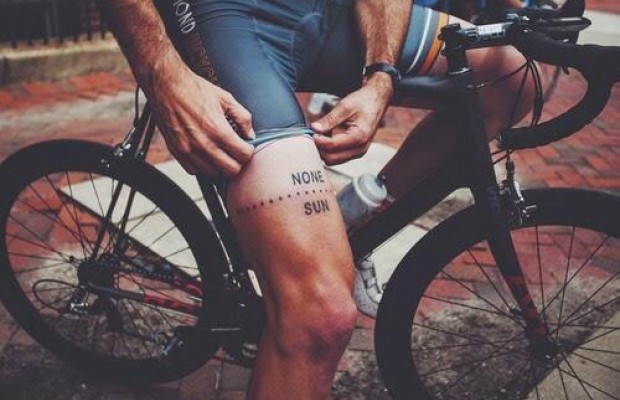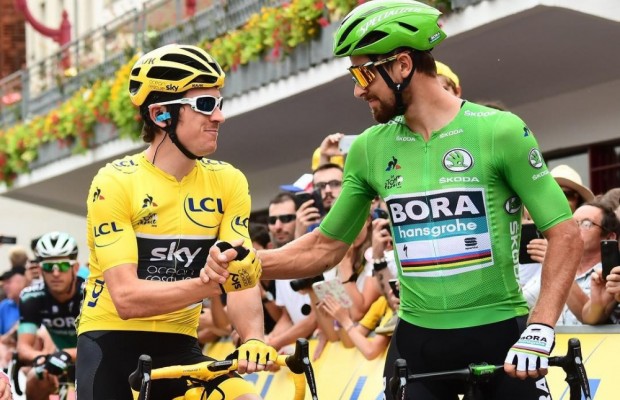We test and compare three MTB top bikes: Specialized Epic vs Scott Spark vs Cannondale Scalpel
In recent weeks we have had the opportunity to test and compare three of the best full suspension XC mountain bikes on the market. These are three true top bikes, which are currently leading the way in this sport's technology. We are talking about the Specialized Epic S-Works, the Cannondale Scalpel Hi-MOD Ultimate and the Scott Spark RC 900 SL AXS and here we tell you what makes them different from the rest.

Specialized Epic vs Cannondale Scalpel vs Scott Spark: a direct look at today's XCO
To better understand the current concept of XC bikes, we must first take a look at the circuits that are designed today, whether in the World Cup, World Championships or the Olympic Games, as it is these competitions that to a certain extent direct the development of new models. Years ago the circuits were very natural and, although they have always had technical parts, the pure physical capacity of the rider was more important. At that time, hardtails and super-lightweight mountain bikes were the most popular.
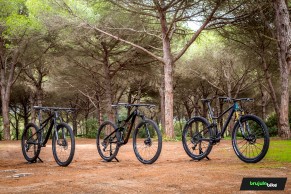
RECOMENDADO
Nowadays, however, more artificial circuits are made and there are many technical and dangerous areas, such as the well-known Rock Gardens. Races are fast-paced and the technical ability of the rider is becoming more and more important. This is why the bikes have evolved and have greatly improved their capabilities when the terrain slopes downwards. You don't see these extremely light bikes so much any more, but rather a lot of importance is given to reliability and performance both uphill and downhill. Of course lightness is still one of the most valued qualities, and these bikes are a clear example of that, but they offer much more.
Now let's take a look at each of these supermodels and try to find out why they are unique.
Specialized Epic S-Works
A new version of the Epic will be released in 2021. With a very pronounced geometric change that brings its steering angle up to 67.5º (the steepest of the three bikes compared), it also lengthens its reach and its wheelbase, and lowers its bottom bracket by a few millimetres. With these changes, they have achieved brutal poise at high speeds.
On the other hand, its great lightness (it is the lightest of the three in this comparison) and the stiffness it achieves with its Fact 12M carbon construction give it great climbing capabilities.
As for the Brain, it has also been redesigned, achieving a great integration in the frame, in fact part of it is inside the left chainstay. As we already mentioned in the specific test of this model, the transition from closed to open has been much smoother, reducing the first impact that was noticed when the system was opened.
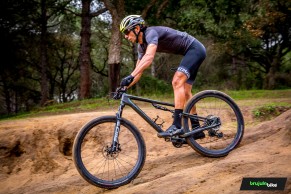
At the front end it has the new Rock Shox Sid SL Ultimate with a Brain system inside. This new Sid has gained a lot in smoothness and, although the Brain in the forks is not to everyone's liking, we have to say that we have been convinced by its good performance. In addition to having the adjustment in its upper part we can vary the sensitivity on the move.
Another highlight is the new Roval Control SL wheels, which have a new rim width of 29mm. These rims combined with Fast Track 2.3" tyres give a really big ball that provides a very good ride comfort.
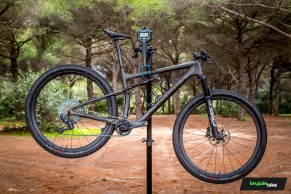
The main differentiating feature of the Specialized Epic S-Works is the absence of lockout controls, relying on the autonomous management of its Brain system. On this bike you only have to worry about pedalling and when the obstacles come, let the suspensions act by themselves.
As a disadvantage with respect to its rivals in the comparison we can say that it does not have the same sensitivity and comfort to small obstacles as the others when fully unlocked.
Cannondale Scalpel Hi-Mod Ultimate
The Scalpel is one of the mountain bikes that has undergone the biggest renovation in 2021 thanks to its innovative FlexPivot system. Its geometry also tends towards versatility, with a steering angle of 68º, which in this case is accompanied by a fork with a greater than usual 55mm of travel. This means that the steering retains the agility of an XC bike despite the front wheel being so far forward. Cannondale calls this concept OutFront Steering Geometry.
The rear swingarm again relies on carbon flex as it has done since the birth of the Scalpel model, but this time this flex is sought at the rear of the chainstays, where a Horst Link joint would go. Now the chainstays are transformed into a flat carbon fibre plate that allows some vertical movement. This is called FlexPivot, and thanks to it, the system is lighter in weight, provides greater lateral stiffness and simplifies the system, freeing it from maintenance.
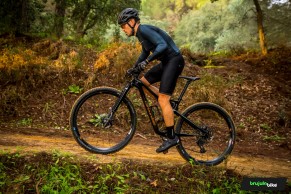
As it could not be otherwise, the frame will come with the legendary Lefty fork, in this case the new Lefty 8 with its profound renovation, now with a single chainring and tapered steerer tube compatible with most frames on the market. This fork performs exquisitely and, contrary to what may appear visually, has a more than remarkable stiffness.
The assembly of the Cannondale Scalpel HI-MOD Ultimate is amazing. Entrusting part of the components to the Enve brand, which provides handlebars, seatpost and M525 rims.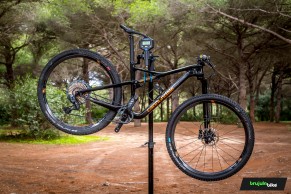
When we ride the Scalpel, on one hand we notice a great comfort in terms of the posture we adopt on the bike, but it is noticeable that the suspension is designed not so much for comfort but for maximum efficiency. They offer a progressive feel and with the recommended sag it feels quite firm.
A detail to be taken into account also regarding the suspension is that the control that acts on both has only two positions, open or fully locked. Recreational riders or even marathon riders might miss an intermediate position.
Scott Spark RC 900 SL AXS
The third model in this comparison has a frame with several seasons of racing success behind it. When the Spark model was updated in 2016 it was already ahead of its time with a geometry that sought the poise and safety needed for the circuits that were being implemented in the World Cup.
The Spark frame, with its HMX SL fibres and details such as the carbon crankset, is the lightest of the three at 1799g including shock absorber. But in this bike they have not prioritized lightness above all else, and proof of this is the Fox 34 SC Float Factory fork. Fork with 34mm bars, very robust chassis and 110mm travel. The feel and smoothness of this fork is spectacular and we think it's worth the sacrifice of a few grams of weight.

Both of the Spark's suspensions, as many will know, are controlled by a single control, the famous TwinLoc. This control has three positions and combined with the Fox NUDE EVOL shock absorber, they give us very different behaviours. In the open position we have a very sensitive and really capable suspension when the terrain is difficult, the closed position is a total lockout, but the interesting thing about the concept is in the intermediate position. In this position one of the two positive chambers of the shock closes and we have 70mm of travel instead of 100mm. This also changes the progressiveness and thus gives us a little less sag, so the geometry changes slightly, gaining pedalling efficiency. The intermediate position has been the most used in our tests because it greatly reduces the interaction of the pedal stroke with the suspension but provides excellent traction on difficult climbs.

The equipment of the Scott Spark RC 900 SL AXS is spectacular, highlighting the Syncros Fraser IC SL carbon stem-handlebar set, but above all its striking and luxurious Syncros Silverton SL wheels. These wheels have the particularity of being made from a single piece of carbon that makes up the rim (with an internal width of 26mm), the spokes and the external part of the hubs. The hub mechanism is manufactured by DT Swiss including ceramic bearings and its well-known Ratchet System.
Sram XX1 AXS drivetrain, a shared secret
Our three protagonists share electric and wireless technology, and they do it in a big way, with the best that Sram has to offer, the XX1 AXS. The Epic uses the 10/50 cassette, but the Scalpel and Spark opt for the new 10/52 version. The groupset works great, although at the beginning you have to adapt to the position of the pushbuttons, which vary from the mechanical controls.
The Epic and Spark cranksets are equipped with the Quarq power meter as standard, a detail that adds value to the bike, although considering the prices that these machines command, it seems to us to be a minimum requirement.

On the scales there is a winner which is the Epic, even being a size L the one we tested was lighter than its rivals with its 9.60 kg. The Scalpel is close behind at 9.64 kg. And the Spark is a little less light at 10.11kg, which considering its 34 bar fork set-up, among other things, is still an impressive figure.
Sensations on the ground: how do three of the best full XCO mountain bikes currently on the market perform?
After a few weeks of riding around with these three magnificent bikes, the first thing that is clear to us is that the evolution of the last few years has gone in the right direction. These bikes have improved their capabilities in all areas, thanks to new geometries and technological improvements in their components. But they are all different enough so that each user, depending on their personal preferences, can have their own favourite.
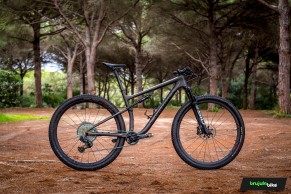
Starting with the suspension concept, the Epic is clearly different. We don't have to operate any controls, the bike does it for us. That's an advantage when we're at the limit of our strength and the terrain is changing. The disadvantage is that we don't have the same sensitivity to small impacts as the other candidates with their open suspensions.
There are also differences between the Scalpel and the Spark. The Scalpel has two positions, all or nothing. This simplifies the task when it comes to riding at 200 beats on an XC course, but an amateur user may miss an intermediate position when riding on trails.
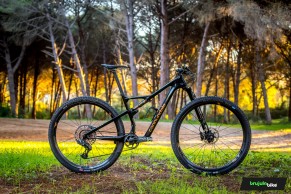
The Spark with its TwinLoc gives the rider control at all times and there is a noticeable difference in each control position, so we can adapt very well to the terrain and get different behaviours.
In terms of traction on steep climbs, the Scalpel and the Spark have a slight advantage thanks to the sensitivity of the rear with its open control. And when it comes to going down hard in tricky areas, all three hold their own, although the Spark with its extremely stiff Fox 34 and 110mm of travel at the front gives extra confidence.
At high speeds the Epic with its 67.5° angle and long wheelbase is the most stable of the three.
On the other hand, the Scalpel has a more agile steering thanks to its Outfront Steering Geometry, and the Spark, with a slightly shorter wheelbase, also manages with ease in twisty areas and curves where it is difficult to enter.
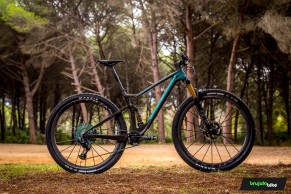
One thing we really liked about the Epic is the 29mm inner rims combined with 2.3" tyres. They give a very generous balloon and we liked the way they behaved, with no noticeable extra weight when riding. The Spark also has a good balloon in its tyres. The Scalpel, on the other hand, is more lacking in this respect, also having the smallest rim width of the three, although its 25mm is not bad at all.
Final conclusions
Every cyclist has their own preferences and tastes, and in the end these are what usually lead us to choose our mount. It is true that we are looking at three bikes with appreciable differences but not so much as to clearly condition our choice.
Trying to be objective, we are going to show our conclusions.
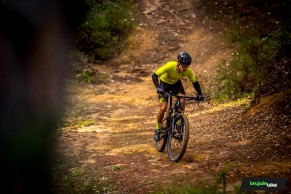
The Scalpel excels when the track becomes more technical and complicated, bringing out its agility and traction. The more twisty the track and the more technical the steps, the more it shows its qualities.
The Epic takes advantage of its geometry at high speeds. It gives an impressive poise. But its lightness also gives it great agility and the Brain has reached a very good level of performance.
And the Spark is a true all-rounder. It performs well in all areas. It is also the one that has given us the best ride comfort, making it a great option for the enthusiast without competitive pretensions. On the downside, it is worth noting that its frame can only take one bottle cage.
After these weeks of testing these incredible MTBs it is very clear to us that the evolution that XC bikes have undergone in recent years is not just a matter of marketing. They have really improved their performance and versatility. Today they are more comfortable and versatile bikes without having lost their racing character.



